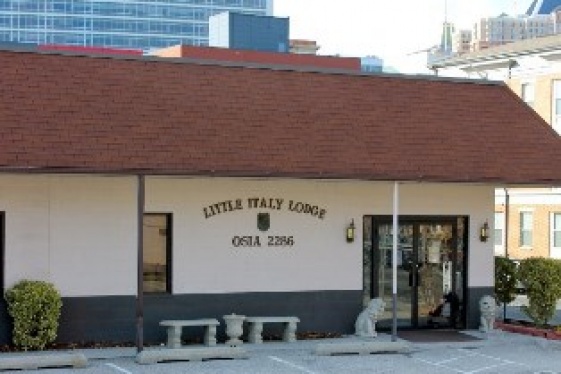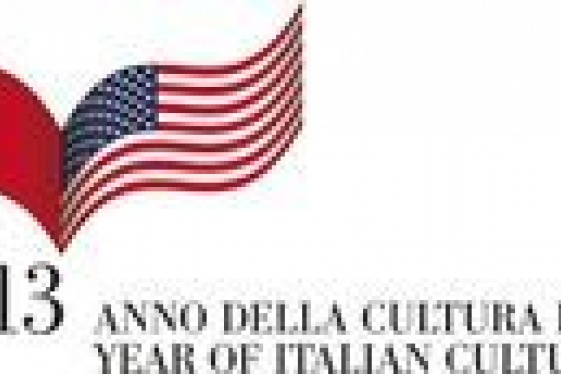
Claudia Giudici (President of "Reggio Children")
Il Reggio Emilia Approach: il modello educativo di tipo italiano apprezzato ovunque negli Stati Uniti

When we think about the Italian superior quality in how to educate our children, a world well known excellence is the Reggio Emilia Approach. Launched after the war by Prof. Loris Malaguzzi, it has slowly but constantly carved out an ever-increasing and appreciated space, in a field as important and delicate as that of primary education.
The US has been maybe the first foreign country to also reward and adopt this extraordinary approach: the "North America Reggio Emilia Alliance" has been representing for 15 years now its winning method and numerous merits. To know more about this marvelous Italian excellence that is highly appreciated in the US, we have with us Prof. Claudia Giudici, President of "Reggio Children", the company that promotes and spreads the Reggio Emilia Approach around the world.
Prof. Giudici, what is the Reggio Emilia Approach and how is your network organized?
The Reggio Emilia Approach is an educational philosophy born more than 50 years ago in kindergartens and then in the communal nursery schools of Reggio Emilia, from an intuition of Professor Loris Malaguzzi and the group of people who worked with him. The city's public administrators also played a very important role in supporting this innovative educational philosophy.
This educational approach takes the form of a few aspects. First of all, we can emphasize the fact that we immediately recognized – remember, we were in the '60s - the child as a citizen, subject of rights, and competent from the birth, with respect to their own ways of learning and building knowledge. This is today something widespread and recognized, but back then it was an innovative and topical intuition. I believe that today it maintains its innovative capacity, because it is carried out daily in the experience of nursery schools and kindergartens in Reggio, where there is full correspondence between declarations of principle and value and the conditions built daily to match them. Reggio Emilia has been able to build the educational contexts that allow children to express their skills and potential.
Another aspect is to recognize the importance for children's learning of relationships with others: individual and group learning. Observing the children in their way of learning, Malaguzzi emphasized and considered as fundamental the fact that children learn through different languages, through a multisensory, polysemy mode. This is what has then become the metaphor of children's "100 languages", which describes an idea of learning and building plural knowledge. Another important aspect is to consider creativity as a quality of thought for every child, not just some. This has led to a coherent organizational and managerial choice, that of wanting a figure like the atelierist in nursery schools since the 1960s: a figure of artistic training, which is part of the working group that works daily with teachers and children. This choice also demonstrated another important aspect that recent research has acknowledged, namely the importance of an aesthetic dimension in learning processes: considering aesthetics, in fact, synonymous with knowledge. The way children know each other is therefore also an aesthetic way of thinking, as Gregory Bateson had already extensively argued.
Another very important aspect was the importance given to the educational space, which Loris Malaguzzi metaphorically defined as the "Third Educator", to underline how fundamental it was in children's learning processes.
Finally, there is the importance of the role of teachers, who are central to the educational process, and considered and recognized as researchers, together with the children, of the learning processes and their knowledge. For this role, therefore, the aspect of work collegiality is also important, with a dimension of strong co-responsibility of the educational process. At the same time, it is recognized that in the working group of each nursery and school other figures are also involved, such as that of the educationalist and of the cook, since in the schools of Reggio there is always an internal kitchen.
Another important aspect is the participation of families and the community in the nursery school education project.
These, I would say, are the most important points of a very articulated philosophy, to which is added - of equal importance - the fact that this philosophy has been constantly renewed with the actual experience, considering essential the dimension of research as part of every educational process. I believe that this constant renewal is one of the distinctive aspects of the Reggio Emilia Approach, and has allowed it to be a reference point for many people around the world who are looking for a concrete and different way to give quality education.
The role played by Reggio Children, the company founded in 1994 to promote, disseminate and protect the Reggio Emilia Approach through training, consultancy, organizing exhibitions and publishing activities, is fundamental in all this. We have relations with 142 countries in the world, 35 of which constitute the international network of Reggio Children.
In 2011, the Fondazione Reggio Children "Centro Loris Malaguzzi" was also founded, a nonprofit with the goal of raising funds, to promote quality education in disadvantaged contexts and sponsor research projects.
Please, tell us something more about Loris Malaguzzi, the father of the Reggio Emilia Approach
Loris Malaguzzi was both a great visionary and an extremely pragmatic man. He combined his innovative ideas with the ability to put them into practice: I think this is an important aspect, as well as a typical Reggiano trait.
Prof. Malaguzzi was a great educator who also had a very strong political and social dimension and sensibility: he always used to say that in the educational experience in nurseries and schools it was never good to keep the social, political, cultural and pedagogical dimension separate, which – instead - should always be in close relationship.
He was a very curious man, who constantly pursued innovation, believing that education, as such, had to remain in a constant relation with contemporary life: to do so he always sought new interlocutors and crossed geographical and cultural boundaries. The pedagogy of Reggio, created by Loris Malaguzzi, is therefore a pedagogy where the encounter of different knowledge and different disciplines give rise to an innovative educational philosophy. An educational experience that is t a great collective history made up of men and, above all, women.
One of your communication tools is the travelling exhibition "The amazement of knowledge", which has also been in the US...
The exhibition "The amazement of knowledge" was inaugurated in 2008 in Boulder, CO. It "inherited" the long history of the previous exhibition, which was entitled "The 100 languages of children", which began its international tour in 1981 from Sweden: even this exhibition was shown in more than 40 cities of the US.
Since Boulder, "The amazement of knowledge" has been exhibited in 20 cities in the US. The last stage was Ann Arbour, MI; the next one will be in Seattle, WA where it will be inaugurated in February 2018, and then Boston, MA. It will be in other American cities until 2019: the exhibition has also had some "trespasses" in Canada, and, at the same time as the US, has been exhibited in New Zealand, Israel, Turkey, Germany, Australia, India and Japan, and is currently in China, where it has been exhibited in Shanghai, Beijing, Canton and other cities.
The exhibition has a narrative and communicative structure that through words, images and children's artifacts and videos recounts the educational experience of the nursery schools and kindergartens of Reggio. It is organized in 6 sections, therefore it touches different areas. From projects related to the physical environment, to the ones related to the imaginative one; from the encounter with materials, to projects that see children meet the different places of the city, interpreted through the children's points of view and interpretative and representative skills.
The exhibition is very rich in documentation, which through videos and various publications proposes different levels of detail. Moreover, in every city, in conjunction with the period of the exhibition, guided tours and, conferences are always organized. This is important because, in every place where the exhibition has gone, it has become a sort of Agora, a training tool for teachers and occasion for discussion on the theme of education, starting from real and concrete experiences, which testify that it is possible to do school differently.
What is the North America Reggio Emilia Alliance, and what activities are being organized in the US?
The North America Reggio Emilia Alliance was born from a group of people, universities and schools that for several years had relations with Reggio and the Reggio Emilia Approach: in 2002 it was decided to set up a more stable and recognized organization. NAREA promotes and spreads the Reggio Emilia Approach in the US and Canada through training activities, conferences and seminars, the annual organization of study groups in Reggio Emilia, the translation and distribution of books relating to the Reggio Emilia Approach. NAREA is part of the international network that, together with the other 34 countries, allows Reggio Children to have an observatory focused on how the experience of Reggio is recognized, interpreted and taken as a point of reference in different countries.
The North America Reggio Emilia Alliance also maintains several relations with American colleges and universities, which have courses or teachings dedicated to the Reggio Emilia Approach.
There is also a newsletter, called "Innovation", where written speeches and contributions by teachers, researchers from Reggio schools and universities in the US are published.
What can we say to our readers who would like to know which American schools apply the Reggio Emilia Approach?
Good question! Let's say right away that there are no schools that are recognized all over the world as "Reggio Emilia Approach" certified. The North America Reggio Emilia Alliance website therefore does not contain such a list.
There are many schools that are inspired by our approach, schools that refer to the North America Reggio Emilia Alliance. This difference between certification and inspiration is important, precisely because ours is not a method, but an approach: there is no certification, but rather the implementation of training or counselling processes to be realized with Reggio Children, combined with the interpretation of the context in which the school is located.
Is there a particular involvement or interest in the Reggio Emilia Approach from the Italian American community, or from the Italian community recently emigrated to the US?
With the exception of the San Francisco experience, so far there have not been any particular contacts: but my personal experience is that, in the conferences organized during the various exhibitions or on other occasions, we always feel the Italian presence, in the interest of an educational approach that is strongly Italian, albeit with a great international identity. However, this presence has never been structured in a strict and identifiable way, both with the Italian Americans and with the Italians who were born in Italy and later immigrated to the US.
Collaboration with these communities would be something that we would certainly be interested in developing: as I said before, there is already a case of success and it is that of the Italian school in San Francisco. It is a school born at the behest of a group of Italian parents: at the beginning, the school was born to keep the Italian language and culture alive in their children, and then the school grew a lot. In a context of great development such as that of San Francisco, the school has grown to become strongly international, but maintaining a trait of Italian identity, both linguistic and cultural, and inspired by the Reggio educational approach. This is a school of extraordinary level and quality: starting from the director Valentina Imbeni, to the entire community of teachers, employees and parents, I believe that it is an important testimony of how Italy and Italian spirit can become a reference point for international development, especially in the US.
Is there something distinctly Italian, an aspect recognizable as typical of our country, in the approach created by Loris Malaguzzi?
Certainly, the first answer to this question leads me to cite the importance given to creativity as a quality of thought that belongs to everyone, therefore the ability of divergent thinking to create new connections and build contexts that stimulate and promote this dimension, these competences.
I would also mention theory and practice: it is a combination that, if we think about it, brings together American and Italian culture, "Thinking with hands."
Then there is the whole dimension, not to be underestimated within the plurality of languages, given to the importance of food as one of the 100 languages of children. Food is important for the nutritional aspect, but also in its conversational, relational dimension: I believe that this too is actually a very Italian aspect.
There are also a few books published in the US on these topics, including "Loris Malaguzzi and the Schools of Reggio Emilia" and "Loris Malaguzzi and the Reggio Emilia Experience"...
Actually, many books have been published in the US about the Reggio Emilia Approach, books that have played an important role in spreading its message. The first was "The Hundred Languages of Children: Reggio Emilia Approach" edited by Caroline Edwards, Lella Gandini and George Forman, published in the US and only later in Italy. It has an extraordinary interview made by Lella Gandini to Loris Malaguzzi: that was the book that introduced his thought and the educational approach of Reggio Emilia in the US.
There are also other books published in America that have recounted Malaguzzi's thought, who frequently came to the US until his death 1994, a few weeks before the birth of Reggio Children. These publications try to combine testimonies, documentation and experiences made in schools in Reggio or in schools in the US that are inspired by Reggio Emilia Approach, telling the principle of the union between theory and practice. As I said, the book "I cento linguaggi dei bambini" was published in Italy only after the extraordinary success of the American edition, when Malaguzzi had already left us.
In addition to those you mentioned, another very important book is "Making learning visible", a book published by Reggio Children together with Harvard-Project Zero. Once again, this book was published (in 2001) before in English and then in Italian: it shows the outcome of a research coordinated by Reggio Children with the group of Professor Howard Gardner, Harvard-Project Zero. The research was realized in the late '90s and was about the individual group learning and the role of documentation as a strategy and modality of learning, as well as evaluation. This book is now adopted in many universities in the US and many other countries around the world, and has been translated into Arabic, Chinese, Korean, Japanese, Swedish and many languages.
You may be interested
-
'Phantom Limb': A Conversation With Dennis...
Dennis Palumbo is a thriller writer and psychotherapist in private practice. He's the auth...
-
“The Art of Bulgari: La Dolce Vita & Beyond,...
by Matthew Breen Fashion fans will be in for a treat this fall when the Fine Arts Museums...
-
13th Annual Galbani Italian Feast of San Gen...
In September of 2002, some of Los Angeles' most prominent Italian American citizens got to...
-
1st Annual Little Italy Cannoli Tournament
Little Italy San Jose will be hosting a single elimination Cannoli tournament to coincide...
-
2015 scholarship competition
The La Famiglia Scholarship committee is pleased to announce the financial aid competition...
-
9th Annual Sacco and Vanzetti March/Rally
Saturday, August 23rd, in Boston, the 87th anniversary of the execution of Nicola Sacco an...
-
A Week in Emilia Romagna: An Italian Atmosp...
The Wine Consortium of Romagna, together with Consulate General of Italy in Boston, the Ho...
-
An Unlikely Union: The love-hate story of Ne...
Award-winning author and Brooklynite Paul Moses is back with a historic yet dazzling sto...



























